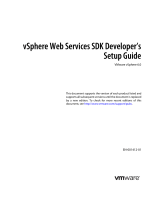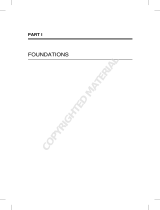Novell PlateSpin Orchestrate 2.5 Quick start guide
- Type
- Quick start guide
Novell PlateSpin Orchestrate 2.5 is a robust tool that allows you to harness the power of distributed computing by creating a single manageable grid from diverse computing resources. With it, you can manage virtual machines, deploy jobs, automate processes, and efficiently utilize resources through policies, all while monitoring usage. You can also leverage its job scheduling capabilities to optimize resource allocation.
Novell PlateSpin Orchestrate 2.5 is a robust tool that allows you to harness the power of distributed computing by creating a single manageable grid from diverse computing resources. With it, you can manage virtual machines, deploy jobs, automate processes, and efficiently utilize resources through policies, all while monitoring usage. You can also leverage its job scheduling capabilities to optimize resource allocation.



















-
 1
1
-
 2
2
-
 3
3
-
 4
4
-
 5
5
-
 6
6
-
 7
7
-
 8
8
-
 9
9
-
 10
10
-
 11
11
-
 12
12
-
 13
13
-
 14
14
-
 15
15
-
 16
16
-
 17
17
-
 18
18
-
 19
19
-
 20
20
-
 21
21
-
 22
22
Novell PlateSpin Orchestrate 2.5 Quick start guide
- Type
- Quick start guide
Novell PlateSpin Orchestrate 2.5 is a robust tool that allows you to harness the power of distributed computing by creating a single manageable grid from diverse computing resources. With it, you can manage virtual machines, deploy jobs, automate processes, and efficiently utilize resources through policies, all while monitoring usage. You can also leverage its job scheduling capabilities to optimize resource allocation.
Ask a question and I''ll find the answer in the document
Finding information in a document is now easier with AI
Related papers
-
Novell PLATESPIN ORCHESTRATE 2.0.2 Quick start guide
-
Novell PlateSpin Orchestrate 2.0 Configuration Guide
-
Novell PlateSpin Orchestrate 2.0 User guide
-
Novell PlateSpin Orchestrate 2.0 User guide
-
Novell PlateSpin Orchestrate 2.0 User guide
-
Novell PlateSpin Orchestrate 2.5 Configuration Guide
-
Novell PlateSpin Orchestrate 2.5 User guide
-
Novell PlateSpin Orchestrate 2.5 Configuration Guide
-
Novell PlateSpin Orchestrate 2.5 User guide
-
Novell Cloud Manager 1.1 User guide
Other documents
-
VMware vCenter vCenter Orchestrator 4.1.2 Configuration Guide
-
VMware vCenter vCenter Orchestrator 4.0.2 Configuration Guide
-
Alloy AMS-48T4S4SFP User manual
-
 VMware vSphere vSphere 6.0 Installation guide
VMware vSphere vSphere 6.0 Installation guide
-
 Wiley 978-0-470-88799-8 Datasheet
Wiley 978-0-470-88799-8 Datasheet
-
McAfee Network Security Platform 6.1 Upgrade Manual
-
Amazon Web Services Introduction Manual
























